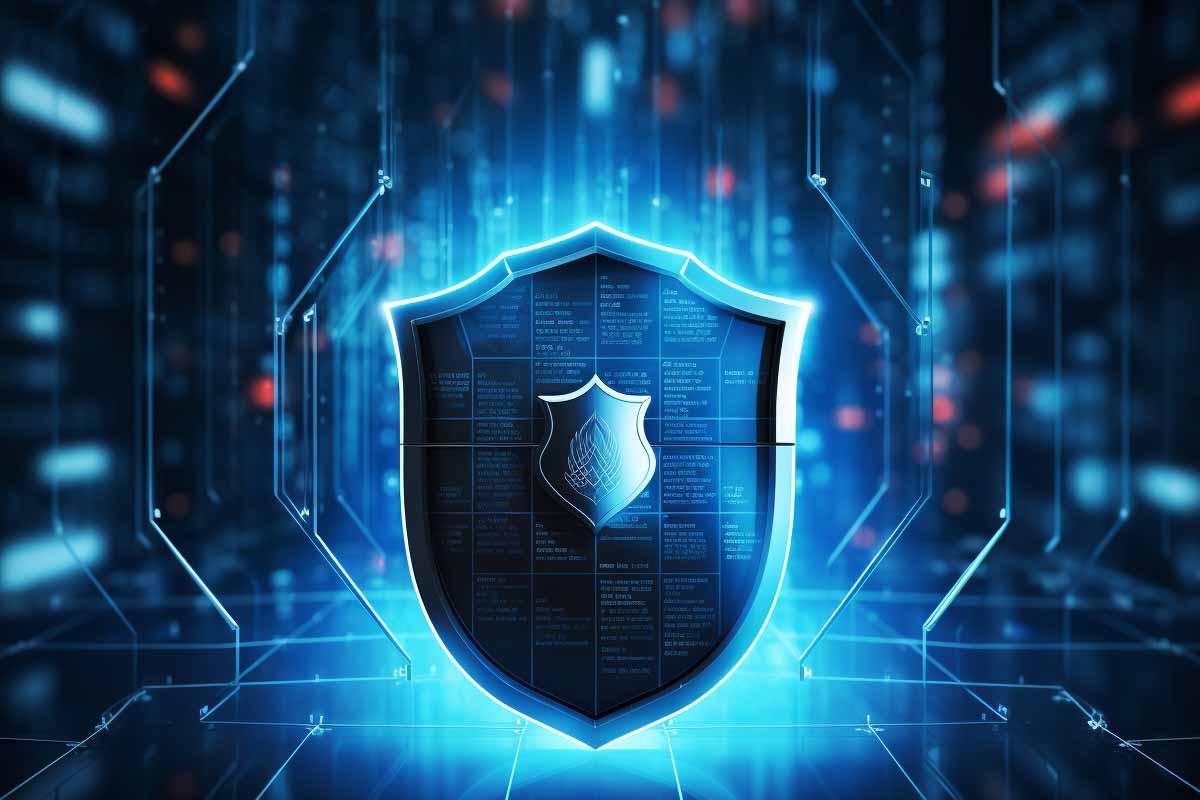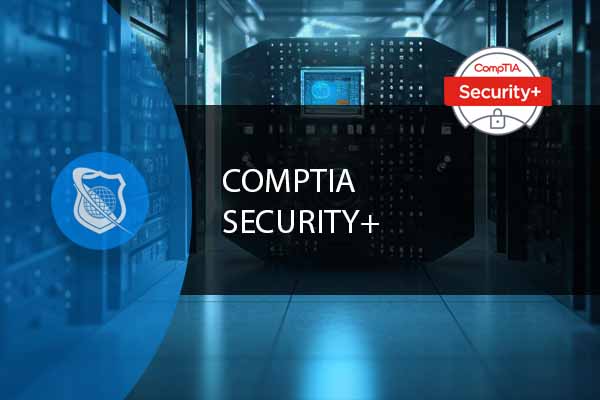Why Security+ is a Must-Have
The Growing Importance of Cybersecurity
In today’s interconnected world, cybersecurity is not just a buzzword; it’s a critical component of any organization’s infrastructure. With the increasing number of cyber threats, such as ransomware, phishing attacks, and data breaches, the need for skilled cybersecurity professionals has never been higher. This is where the CompTIA Security+ certification comes into play. It serves as a foundational stepping stone for those looking to build a career in this ever-evolving field.
A Comprehensive Curriculum
The CompTIA Security+ certification covers a broad range of essential topics, from network security and access control to risk management and cryptography. This comprehensive curriculum ensures that you have the foundational knowledge required to protect organizations from a wide array of cybersecurity threats. The certification is also updated regularly to include the latest trends and technologies, ensuring that you stay current in your skills and knowledge.
Secure Your Networks and Prevent Password Breaches
Our robust CompTIA Sec+ course is the perfect resouce to ensure your company’s most valuable assets are safe. Up your security skills with this comprehensive course at an exceptional price.
Vendor-Neutral Certification
One of the key advantages of the CompTIA Security+ certification is its vendor-neutrality. Unlike some certifications that focus on a specific technology or platform, Security+ provides you with the skills and knowledge applicable to any environment. This makes you more versatile and valuable in the job market.
Globally Recognized Standard
The CompTIA Security+ certification is globally recognized and accredited by various organizations, including the U.S. Department of Defense. This global recognition ensures that your skills are valid and respected, no matter where your career takes you.
Career Opportunities
A Wide Range of Job Roles
With a Security+ certification, you’re not limited to a single career path. The certification opens doors to various roles within the cybersecurity landscape. Whether you’re interested in becoming a Security Analyst responsible for monitoring and analyzing an organization’s security posture, or a Systems Administrator tasked with implementing and managing security measures, Security+ serves as a valuable credential.
Career Advancement
For those already in the IT field, obtaining the Security+ certification can be a significant career booster. It can pave the way for promotions and even transitions into specialized cybersecurity roles. Many organizations require or prefer certifications for higher-level positions, making Security+ a valuable asset for career advancement.
Competitive Salary
According to various salary surveys, professionals with a Security+ certification tend to earn higher salaries compared to those without any certifications. The certification not only proves your skills but also your commitment to the field, making you a more attractive candidate for employers.
Global Opportunities
Because the Security+ certification is globally recognized, it offers career opportunities beyond your local job market. Whether you’re interested in working for a multinational corporation or offering your services as a freelance cybersecurity consultant, the certification provides the credibility you need to work on a global scale.
Future-Proofing Your Career
As technology evolves, so do cybersecurity threats. The constant need for professionals who can adapt and combat these emerging risks makes cybersecurity a field with excellent job security. By obtaining the Security+ certification, you’re taking a proactive step in future-proofing your career.
the CompTIA Security+ certification is more than just a piece of paper; it’s a testament to your skills and dedication to the field of cybersecurity. With this certification, you not only validate your skills but also open doors to numerous career opportunities, making it a must-have for anyone serious about a career in cybersecurity.
Secure Your Networks and Prevent Password Breaches
Our robust CompTIA Sec+ course is the perfect resouce to ensure your company’s most valuable assets are safe. Up your security skills with this comprehensive course at an exceptional price.
Mistake #1: Underestimating the Exam
Common Misconceptions
The “Entry-Level” Trap
One of the most pervasive misconceptions about the CompTIA Security+ exam is that it’s merely an entry-level certification, and therefore, easy to pass. This notion often leads candidates to adopt a casual approach to their preparation, assuming that a quick read-through of a study guide or a few hours of video tutorials will suffice. This is a dangerous mindset to have.
Overconfidence Due to Prior Experience
Another common mistake is overconfidence, especially among those who already have some experience in IT or cybersecurity. While experience is undoubtedly beneficial, the Security+ exam is designed to test a wide array of knowledge and skills, some of which might not be part of your day-to-day job. Overconfidence can lead to inadequate preparation, resulting in a rude awakening on exam day.
The Reality
Comprehensive Coverage of Topics
The CompTIA Security+ exam is a comprehensive test that covers a multitude of topics, ranging from network security, cryptography, and identity management to risk management and compliance. Each of these topics is complex in its own right and requires a deep understanding to answer questions accurately.
Scenario-Based Questions
Adding to the complexity are the scenario-based questions that CompTIA often includes in their exams. These questions require not just rote memorization of facts but also the ability to apply knowledge in practical, real-world situations. You may be asked to identify vulnerabilities in a given network architecture or to suggest the best security controls for a specific business scenario. These types of questions demand a deep and comprehensive understanding of the subject matter.
Performance-Based Questions (PBQs)
The exam also includes Performance-Based Questions (PBQs), which are essentially hands-on tasks that you must complete. These could range from configuring a firewall to setting up secure access controls. PBQs test your practical skills and are a significant reason why hands-on experience is so crucial for this exam.
The Need for a Structured Study Plan
Given the breadth and depth of topics covered, a structured study plan is not just advisable; it’s essential. This plan should include a mix of study materials, including textbooks, video lectures, practice exams, and hands-on labs. Allocate sufficient time for each topic and stick to your schedule rigorously.
In summary, never underestimate the CompTIA Security+ exam. It’s a challenging test that requires a solid preparation strategy and a deep understanding of a wide range of topics. Treat it with the respect it deserves, and prepare as if you’re aiming for a much higher-level certification. Only then will you stand a good chance of passing the exam on your first attempt.
Secure Your Networks and Prevent Password Breaches
Our robust CompTIA Sec+ course is the perfect resouce to ensure your company’s most valuable assets are safe. Up your security skills with this comprehensive course at an exceptional price.
Mistake #2: Ignoring the Exam Objectives
Importance of Exam Objectives
A Structured Approach to Learning
CompTIA provides a detailed list of exam objectives to guide candidates through the maze of topics that the Security+ exam covers. These objectives are not just a list; they are a structured approach to learning. They break down the vast syllabus into manageable sections, each focusing on a specific area of cybersecurity. Ignoring these objectives is akin to setting off on a cross-country journey without a map or GPS; you might eventually get to your destination, but you’ll likely take many wrong turns along the way.
Prioritizing Your Study Efforts
The exam objectives also help you prioritize your study efforts. Some topics carry more weight in the exam than others, and the objectives often indicate this. By focusing on these high-priority areas, you can maximize your chances of scoring well.
Avoiding Unnecessary Stress
Many candidates who ignore the objectives end up feeling overwhelmed because they don’t have a structured approach to tackle the vast syllabus. This lack of structure can lead to unnecessary stress and anxiety, which are the last things you need when preparing for an important exam like Security+.
How to Utilize Them
Creating a Customized Study Plan
The first step in utilizing the exam objectives is to create a customized study plan. Break down each objective into sub-topics and allocate time for each based on its complexity and your familiarity with it. This plan will serve as your study roadmap, helping you navigate through the extensive material you need to cover.
Using Them as a Checklist
As you complete each topic, use the objectives as a checklist to ensure you’ve covered all the necessary sub-topics and understand them thoroughly. This approach not only ensures that you don’t miss out on any crucial information but also gives you a sense of accomplishment as you tick off each objective, boosting your confidence.
Self-Assessment and Gap Analysis
After you’ve gone through all the objectives and sub-topics, it’s a good idea to perform a self-assessment. Try to answer practice questions or explain the concepts to someone else to gauge your understanding. If you find gaps in your knowledge, revisit the relevant objectives and study materials to fill them.
Continuous Revision
The objectives should also guide your revision. As the exam date approaches, go through the list again to ensure you’re comfortable with each topic. Use this time to focus on your weak areas and to solidify your understanding of the more complex topics.
In summary, the exam objectives provided by CompTIA are an invaluable resource for anyone preparing for the Security+ exam. They offer a structured and prioritized approach to studying, ensuring that you cover all your bases. Ignoring them is a mistake that could cost you dearly, both in terms of time and your exam score. Make them the cornerstone of your preparation strategy, and you’ll be well on your way to acing the exam.

Lock In Our Lowest Price Ever For Only $14.99 Monthly Access
Your career in information technology last for years. Technology changes rapidly. An ITU Online IT Training subscription offers you flexible and affordable IT training. With our IT training at your fingertips, your career opportunities are never ending as you grow your skills.
Plus, start today and get 10 free days with no obligation.
Mistake #3: Relying Solely on One Study Material
Diversifying Your Resources
The Limitations of a Single Source
While there are numerous high-quality CompTIA Security Plus Study Guides available, each has its own set of limitations. Some may excel in explaining complex technical topics but may lack in offering practical, hands-on examples. Others might provide excellent practice questions but may not cover the theoretical aspects in depth. Relying solely on one resource can leave gaps in your knowledge and skills, making you less prepared for the diverse range of questions you’ll encounter on the exam.
The Benefits of a Multi-Faceted Approach
Using a variety of study materials allows you to benefit from the strengths of each, thereby providing a more rounded and comprehensive understanding of the subject matter. For example, textbooks can offer in-depth explanations, while video tutorials can provide visual and practical context. Practice exams can help you get accustomed to the question format and time constraints, and hands-on labs can solidify your practical skills.
Recommended Study Materials
Textbooks for Theoretical Understanding
Textbooks are an excellent resource for gaining a deep theoretical understanding of the topics covered in the Security+ exam. They often provide detailed explanations, examples, and even review questions at the end of each chapter. Look for books that are up-to-date with the latest exam objectives and have received good reviews from other test-takers.
Video Tutorials for Visual Learning
Some people are visual learners, and for them, video tutorials can be invaluable. Platforms like Udemy, Pluralsight, and even YouTube offer a wide range of Security+ courses that cover the exam objectives. These videos often include demonstrations, making complex topics easier to understand.
Practice Exams for Assessment
Practice exams are crucial for gauging your readiness for the actual exam. They help you identify your strong and weak areas, allowing you to allocate your study time more effectively. Many online platforms offer practice exams that mimic the format and difficulty level of the real exam, providing you with a realistic test-taking experience.
Hands-On Labs for Practical Skills
The Security+ exam includes Performance-Based Questions that test your practical skills. Hands-on labs are an excellent way to prepare for these. Platforms like Cybrary or even CompTIA’s own CertMaster Labs offer virtual lab environments where you can practice real-world scenarios. These labs can help you understand how to apply theoretical knowledge in a practical context, making you better prepared for the exam.
In summary, diversifying your study materials is crucial for a well-rounded preparation for the Security+ exam. A balanced combination of textbooks for theory, video tutorials for visual learning, practice exams for self-assessment, and hands-on labs for practical skills can significantly enhance your chances of passing the exam. Don’t make the mistake of relying solely on one type of resource; instead, utilize a mix to cover all your bases.
Secure Your Networks and Prevent Password Breaches
Our robust CompTIA Sec+ course is the perfect resouce to ensure your company’s most valuable assets are safe. Up your security skills with this comprehensive course at an exceptional price.
Mistake #4: Lack of Hands-On Practice
Importance of Practical Experience
The Gap Between Theory and Practice
While textbooks and video tutorials are excellent resources for understanding the theoretical aspects of cybersecurity, they often fall short in preparing you for the practical elements. Cybersecurity is an inherently hands-on field. You can’t fully grasp the nuances of network security, for instance, without actually configuring a firewall or setting up a VPN. The CompTIA Security+ exam recognizes this and includes performance-based questions (PBQs) that test your ability to apply theoretical knowledge in a simulated environment.
Real-World Relevance
The practical skills you gain while preparing for these PBQs are not just for passing the exam; they are skills you’ll use in your day-to-day role as a cybersecurity professional. Whether it’s configuring security protocols, analyzing logs for suspicious activity, or implementing access controls, hands-on experience is invaluable. It not only enhances your problem-solving abilities but also boosts your confidence, making you a more competent and effective professional.
How to Gain Hands-On Skills
Virtual Labs for Simulated Experience
One of the most effective ways to gain practical experience is through virtual labs. These labs simulate real-world environments and scenarios, allowing you to practice tasks like network configuration, vulnerability assessment, and incident response. Platforms like Cybrary, CertMaster Labs, and even some Udemy courses offer virtual labs specifically designed for Security+ exam preparation.
Simulation Software for Custom Scenarios
Another option is to use simulation software like GNS3 or Packet Tracer, which allows you to create your own network environments. While these tools have a steeper learning curve, they offer the flexibility to practice specific scenarios that you might be struggling with. You can set up different network topologies, configure security protocols, and even simulate cyber-attacks to test your skills.
Capture The Flag (CTF) Challenges
For those who prefer a more interactive and competitive approach, Capture The Flag (CTF) challenges can be an excellent way to hone your practical skills. These challenges often involve tasks like penetration testing, code analysis, and cryptography, all of which are relevant to the Security+ exam. Websites like Hack The Box and CTFtime offer a range of challenges that can help you improve your practical cybersecurity skills.
Community and Peer Support
Don’t underestimate the value of community and peer support when it comes to gaining hands-on experience. Online forums, social media groups, and even local meetups can provide opportunities to collaborate on projects, share resources, and get feedback on your practical work. Learning from others can offer new perspectives and insights that you might not get from formal study materials alone.
In summary, hands-on practice is not an optional component of your Security+ exam preparation; it’s a necessity. Utilize virtual labs, simulation software, CTF challenges, and community resources to gain the practical skills you need to excel in both the exam and your future career. Ignoring this crucial aspect of your preparation could result in a disappointing exam performance and a steeper learning curve when you enter the professional world.
Secure Your Networks and Prevent Password Breaches
Our robust CompTIA Sec+ course is the perfect resouce to ensure your company’s most valuable assets are safe. Up your security skills with this comprehensive course at an exceptional price.
Mistake #5: Poor Time Management
Time Management Tips
The Perils of Procrastination
Procrastination is often the downfall of many well-intentioned candidates. The Security+ exam covers a broad range of topics, and each requires a significant investment of time to master. Waiting until the last minute to cram is a strategy that rarely, if ever, works. Procrastination not only increases stress levels but also decreases the quality of your study sessions, making it difficult to retain and apply information effectively.
Structured Study Sessions
To combat procrastination, it’s essential to have structured study sessions. Allocate specific times of the day or week solely for studying and treat these blocks of time as non-negotiable appointments with yourself. During these sessions, focus on one topic or objective at a time to ensure that you’re not spreading yourself too thin.
Include Time for Review and Practice Exams
While it’s crucial to allocate time for learning new material, it’s equally important to set aside time for review and practice exams. Regularly revisiting previously studied topics helps reinforce your memory and understanding, making it easier to recall information during the exam. Practice exams also serve as excellent benchmarks to assess your readiness and identify areas that may need more attention.
Creating a Study Plan
Breaking Down the Exam Objectives
The first step in creating a well-thought-out study plan is to break down the exam objectives into smaller, manageable sections. This breakdown will serve as the backbone of your study plan, helping you allocate time effectively. For example, if the exam covers topics like network security, cryptography, and risk management, you might allocate one week for each, depending on your familiarity and the complexity of the topics.
Time Allocation
Once you’ve broken down the objectives, the next step is to allocate specific time blocks for each. Be realistic in your time allocation; if a topic is complex or entirely new to you, it’s okay to allocate more time to it. The key is to ensure that you cover everything before the exam date, leaving some buffer time for unexpected delays or challenges.
Milestones and Checkpoints
Include milestones and checkpoints in your study plan. These are specific dates by which you aim to complete certain topics or objectives. Having milestones creates a sense of urgency and provides short-term goals that make the overall study process less overwhelming.
Flexibility and Adaptation
While it’s important to stick to your study plan as much as possible, life happens, and you may need to adjust your schedule. The ability to adapt your plan while still meeting your milestones is a crucial skill in effective time management. If you find that you’re consistently unable to stick to your plan, it may be time to reassess and make necessary adjustments.
In summary, poor time management can be a critical mistake when preparing for the Security+ exam. Creating and adhering to a well-thought-out study plan can make the difference between passing and failing. By allocating specific times for different topics, setting milestones, and including time for review and practice exams, you set yourself up for success, not just in the exam but also in your future career.
Conclusion
Avoiding these five mistakes can significantly improve your chances of passing the CompTIA Security+ exam. Remember, the key to success is thorough preparation, practical experience, and effective time management. Use this CompTIA Security Plus Study Guide as a resource in your journey towards becoming a certified cybersecurity professional.
CompTIA Security+ Study Guide : Top FAQ Section
What are the most common mistakes to avoid when preparing for the CompTIA Security+ exam?
The most common mistakes include not allocating enough study time, relying solely on free resources, not taking practice exams, underestimating the exam’s practical questions, and not staying updated on the latest cybersecurity trends. To succeed, create a balanced study plan, utilize official CompTIA materials, engage in hands-on practice, and stay informed about industry developments.
How important are practice exams in CompTIA Security+ exam preparation?
Practice exams are crucial for CompTIA Security+ exam preparation. They help identify your strengths and weaknesses, familiarize you with the exam format and question types, and improve your time management skills. Engaging regularly with practice exams can significantly boost your confidence and performance on the actual test.
Can I pass the CompTIA Security+ exam by only using free study materials?
While free resources can be helpful, relying on them exclusively is a common mistake. These materials may not cover all exam objectives or be up-to-date with the latest CompTIA Security+ syllabus. It’s advisable to complement free resources with official study guides, courses, and practice exams for comprehensive preparation.
What is the best way to stay updated on cybersecurity trends for the CompTIA Security+ exam?
The best way to stay informed is by following reputable cybersecurity news platforms, participating in forums like Reddit’s r/netsec or CompTIA’s own community forums, and engaging with professional networks on LinkedIn. Additionally, attending webinars, conferences, and workshops can provide insights into the latest security challenges and solutions relevant to the CompTIA Security+ exam.
How much time should I allocate to study for the CompTIA Security+ exam?
The amount of study time varies depending on your background and familiarity with cybersecurity concepts. On average, candidates might spend 100-120 hours preparing for the exam. It’s recommended to create a study schedule that covers all exam objectives, allows for in-depth review of complex topics, and includes time for practice exams and hands-on experience.
You may also like
CompTIA Security Plus Objectives: The Ultimate Resource for Learners
CompTIA Security Plus Practice Test: Review, Study Plan, and the best 146 Practices Questions
Comptia Security+ (plus) Certification (sy0-601) What & Why
The Importance of a Sec+ Cert When Starting Out In IT Security

























